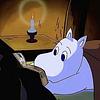Take a photo of a barcode or cover
adventurous
emotional
hopeful
inspiring
lighthearted
reflective
adventurous
hopeful
lighthearted
medium-paced
Plot or Character Driven:
Character
Strong character development:
Yes
Loveable characters:
Yes
Diverse cast of characters:
No
Flaws of characters a main focus:
No
adventurous
slow-paced
Plot or Character Driven:
A mix
Strong character development:
No
Loveable characters:
No
Diverse cast of characters:
No
Flaws of characters a main focus:
No
adventurous
mysterious
medium-paced
Plot or Character Driven:
A mix
Strong character development:
Yes
Loveable characters:
Yes
Diverse cast of characters:
Complicated
Flaws of characters a main focus:
No
The Railway Children is a classic children's book by E. Nesbit, originally published in 1906.
The story follows an Edwardian family who move away from their home in London to a cottage in the countryside. Near to their new home is a Railway line where the three children, Peter, Bobbie and Phyllis, explore and have to fend for themselves. They also befriend workers at the station and on the trains and an Old Gentleman who travels on the train which passes through the station.
This story is a classic full of adventures and joys of an Edwardian family adapting to their new life.
The story follows an Edwardian family who move away from their home in London to a cottage in the countryside. Near to their new home is a Railway line where the three children, Peter, Bobbie and Phyllis, explore and have to fend for themselves. They also befriend workers at the station and on the trains and an Old Gentleman who travels on the train which passes through the station.
This story is a classic full of adventures and joys of an Edwardian family adapting to their new life.
hopeful
lighthearted
adventurous
funny
lighthearted
mysterious
medium-paced
Plot or Character Driven:
Plot
Strong character development:
Yes
Loveable characters:
Yes
Diverse cast of characters:
No
Flaws of characters a main focus:
No
lighthearted
medium-paced
Plot or Character Driven:
Character
Strong character development:
N/A
Loveable characters:
Yes
Diverse cast of characters:
N/A
Flaws of characters a main focus:
N/A
emotional
funny
hopeful
inspiring
lighthearted
relaxing
fast-paced
Plot or Character Driven:
A mix
Loveable characters:
Yes
Very enjoyable. I like how the author made what could be ordinary things happening to a group of young siblings sound like a series of adventures, and how the author talks to the reader, in the way of "you know how this works, being a child, so you know exactly what they're experiencing" or referred to everyday details which are now historical ones to us, this being written and taking place in the early 20th century.






